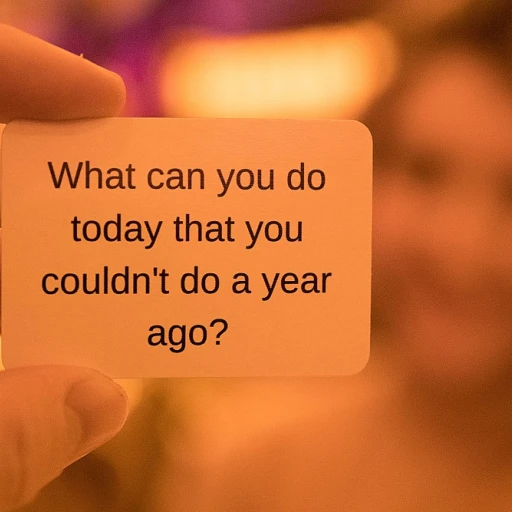
Understanding Extended Reality in Higher Education
Exploring the Dynamic Nature of XR in Education
The incorporation of extended reality in higher education is revolutionizing the way students and educators interact with learning content. Extended reality, encompassing virtual reality (VR), augmented reality (AR), and mixed reality (MR), offers immersive experiences that transform traditional teaching methods, enabling a more dynamic and engaging learning environment. These immersive technologies offer opportunities for students to experience complex subjects in real-time, breaking the boundaries of conventional classroom settings. For instance, medical education can benefit significantly from virtual simulations, allowing students to practice intricate procedures without the associated risks, thereby enhancing health safety. Similarly, virtual field trips can transport students to any historical site or geographical location, providing learning experiences that are far more vivid and memorable. As educational institutions embrace these immersive experiences, they also face opportunities and challenges that require strategic planning and resource allocation. The integration of XR technologies must consider content development, educational outcomes, and the potential for enriched student engagement. With continuous development in XR technologies, it is crucial to create networks among educators and experts who can share insights and strategies for these implementations. While XR technologies present vast potential, they also necessitate a thorough understanding of their applications and limitations. Educators in universities must stay informed about the latest advancements to effectively apply these tools in their pedagogical practices. Thus, building a professional network becomes invaluable for exchanging knowledge, accessing resources, and overcoming barriers that may arise in the field of immersive learning experiences. By immersing students in virtually enhanced environments, higher education can shift from traditional methodologies to more interactive and realistic approaches. For further insight into how virtual assistants can enhance learning experiences, you can read more about enhancing customer support with virtual assistants.The Importance of a Professional Learning Network
Networking for Immersive Education
In the rapidly evolving landscape of higher education, the role of immersive technologies like extended reality (XR) is gaining prominence. Universities around the world are embracing these immersive tools, recognizing their potential to transform learning experiences. For educators, developing a robust professional learning network (PLN) is essential in navigating this transition and enhancing teaching capabilities.
An effective professional learning network provides a platform for educators to access the latest advancements in XR, share immersive educational content, and exchange insights on implementing technologies in classrooms. It supports educators in staying updated with the constantly changing landscape of extended reality, ensuring that they can provide students with cutting-edge learning experiences. By being part of a PLN, educators have the chance to learn from experienced peers, access valuable resources, and collaborate on projects that push the boundaries of traditional educational methods.
The importance of real-time sharing and collaboration cannot be overemphasized, particularly in fields requiring immersive learning such as medical education. By exchanging immersive content and strategies, fellow educators enhance their teaching practices and improve student learning outcomes. Digital platforms and social media groups dedicated to XR in education allow educators to partake in global discussions, reflecting a community-driven approach to continuous learning.
Moreover, exploring avenues like virtual field trips and augmented reality tools within a PLN aligns with the overarching goals of education institutions to deliver innovative education. The experiences gained from such networks assist educators in addressing the opportunities challenges faced in adopting new technologies. As state universities and learning hubs further integrate XR, educators will find immense value in an active PLN to navigate the complexities presented by immersive technologies.
For those embarking on this journey, exploring the world of virtual learning environments can serve as an entry point into the broader domain of immersive education. Engaging with a professional learning network is a vital step for educators aiming to deliver modern, impactful education in higher learning institutions.
Building Your Network: Key Strategies
Effective Strategies to Expand Your Professional Learning Network
Creating a professional learning network (PLN) tailored for extended reality (XR) in higher education involves deliberate strategies and actions that allow educators and stakeholders to connect and collaborate effectively. This network aids in enhancing virtual and immersive learning experiences for students and educators alike. Developing a supportive PLN can be instrumental in unlocking the potential of immersive technologies such as virtual reality (VR), augmented reality (AR), and mixed reality (MR) within educational institutions. Here's how:- Identify Key Stakeholders: The first step in building a robust network is to identify individuals and organizations that are pivotal in XR education. These may include research scholars from universities specializing in immersive learning, tech developers creating cutting-edge XR content, and industry experts in educational technologies. Engaging with these stakeholders will provide diverse perspectives and insights.
- Engage in Online Communities: Participating in online forums and groups focused on XR and educational technology provides ample opportunity to share knowledge and experiences. Platforms like LinkedIn and educational forums allow educators to exchange ideas, discuss challenges, and celebrate successes.
- Participate in Conferences and Workshops: Physical and virtual conferences present a valuable opening to network with peers and experts in the field of higher education. Being present in real-time at XR workshops and seminars can lead to collaborations and partnerships essential for developing immersive content and strategies.
- Utilize Social Media: Social media platforms are powerful tools for educators to disseminate information and stay updated with the latest developments in extended reality. Twitter, in particular, offers a capacity for vibrant discussions that can be both educational and inspiring, fostering connections with influencers in educational technology.
- Collaborate on Projects: Initiating or joining XR-based projects with other educators locally or globally can significantly enhance your learning outcomes. These collaborations often result in innovative educational experiences like virtual field trips, leading to richer learning experiences for students.
Tools and Platforms for XR Collaboration
Leveraging Digital Platforms for XR Collaboration
In the realm of extended reality (XR) in higher education, collaboration is key. As educators and students delve into immersive learning experiences, the right tools and platforms become essential for effective collaboration. These technologies not only facilitate communication but also enhance the educational content delivered through virtual reality, augmented reality, and mixed reality.
Essential Platforms for XR Collaboration
- Virtual Reality Meeting Spaces: Platforms like AltspaceVR and Mozilla Hubs offer immersive environments where educators and students can meet in real time. These spaces simulate real-world interactions, making them ideal for virtual field trips and collaborative projects.
- Learning Management Systems (LMS): Integrating XR content into existing LMS platforms such as Canvas or Blackboard can streamline the distribution of educational materials. These systems support the management of immersive technologies, ensuring that students can access content seamlessly.
- Augmented Reality Applications: Tools like ARKit and ARCore enable the creation of interactive educational experiences. These applications can be used for medical education, allowing students to visualize complex anatomical structures in a real-world context.
Maximizing the Potential of XR Tools
To fully harness the potential of these platforms, educators must be proactive in their approach. Continuous training and development are crucial to staying updated with the latest XR technologies. By participating in professional learning networks, educators can share insights and strategies for integrating immersive content into their teaching practices.
Moreover, universities and educational institutions should invest in the development of XR labs and resources. These facilities provide a controlled environment where students can explore immersive experiences safely, enhancing their learning outcomes.
Addressing Challenges in XR Collaboration
While the benefits of XR in education are vast, there are challenges to consider. Health and safety concerns, such as motion sickness in virtual reality environments, must be addressed. Additionally, ensuring equitable access to XR technologies is vital to prevent disparities in educational opportunities.
By acknowledging these challenges and implementing solutions, educators can create a more inclusive and effective learning environment. As the field of XR continues to evolve, staying informed about future trends will be essential for maximizing the impact of immersive learning in higher education.
Challenges and Solutions in Continuous Learning
Overcoming Obstacles in XR Learning
As educators and students delve into the vast world of immersive learning, they encounter numerous opportunities alongside inevitable challenges that accompany the adoption of new technologies. Extended reality (XR) in higher education introduces innovative teaching and learning experiences, but it is not without its hurdles. Addressing these obstacles is essential for successful implementation and to fully harness the potential of immersive experiences.
Addressing Technical Barriers
Technical challenges are often the first to arise when integrating technologies like augmented reality, virtual reality, and mixed reality into educational settings. The need for high-quality equipment, reliable internet connectivity, and compatible software can limit the accessibility of these tools. Universities must invest in proper infrastructure to ensure that extended reality technologies are not only available but also function seamlessly during educational experiences.
Ensuring Content Relevance and Quality
For XR to enhance learning outcomes effectively, the content itself must be both relevant and of high quality. This requires collaboration between educators, content developers, and students to create and curate engaging educational content that aligns with the curriculum. By prioritizing immersive content that complements pedagogical goals, institutions can offer more meaningful real-time learning experiences.
Training Educators and Students
The introduction of XR technologies in higher education demands proper training for both educators and students to maximize benefits. Universities should provide comprehensive training programs that familiarize educators with XR tools and methodologies, allowing them to integrate immersive experiences into their teaching strategies effectively. Additionally, students should be encouraged to actively engage with these technologies to enhance their own learning processes and technological proficiency.
Navigating Health and Safety Concerns
While XR offers rich, interactive experiences, it also raises concerns regarding health and safety. Prolonged use of VR headsets, in particular, can lead to physical discomfort, including eye strain and motion sickness. Developing guidelines and best practices to manage screen time and ergonomics is crucial to safeguarding students' and educators' health while benefiting from immersive learning opportunities.
Balancing Cost and Innovation
Finally, financial considerations pose significant challenges when adopting cutting-edge technologies in education. Balancing the cost of XR tools with their transformative potential is a complex task for educational institutions. Prioritizing collaboration between universities, industry, and government bodies can help secure funding and resources, facilitating the adoption of immersive technologies without compromising educational budgets.












